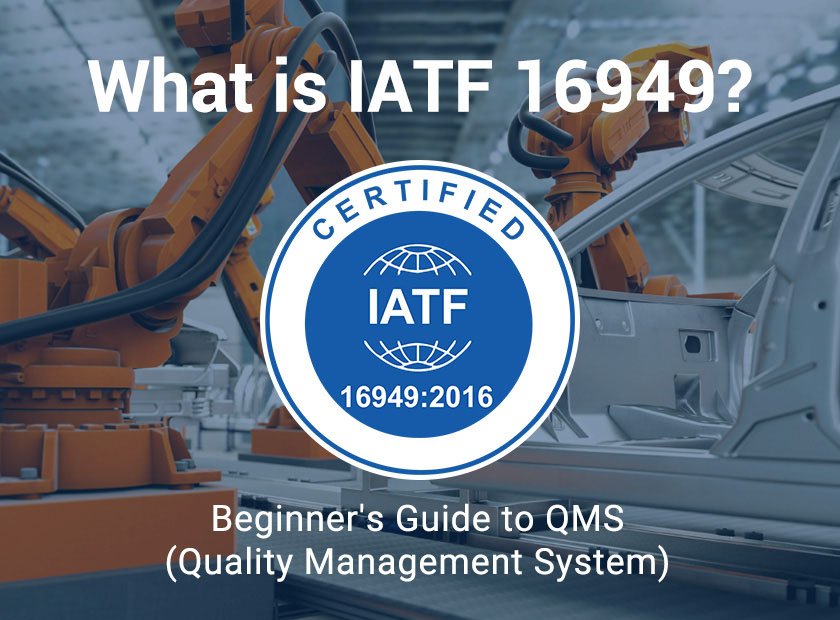IATF 16949 Certification Overview: Ensuring Quality Excellence in the Automotive Industry
IATF 16949 is a globally recognized quality management standard specifically designed for the automotive industry. It outlines the necessary requirements for organizations involved in the production and supply of automotive products and services. The International Automotive Task Force (IATF) developed the standard to create a unified approach for quality management that meets the stringent demands of the automotive sector.

This certification aims to ensure consistent product quality, minimize defects, improve processes, and enhance customer satisfaction. IATF 16949 integrates various industry-specific requirements with ISO 9001:2015, providing a comprehensive framework for organizations to deliver high-quality, defect-free products.
What is IATF 16949?
IATF 16949 is a technical specification that defines the quality management system (QMS) requirements for organizations in the automotive industry. It was established to improve the quality of products and services and to streamline processes. The standard applies to organizations that design, develop, or manufacture automotive products, including components, parts, and systems.
As an extension of the well-known ISO 9001 standard, IATF 16949 addresses critical issues within the automotive supply chain, such as traceability, product conformity, and supplier management. It also requires organizations to demonstrate continuous improvement efforts, risk management practices, and a proactive approach to customer satisfaction.
Key Benefits of IATF 16949 Certification
- Enhanced Product Quality: The core objective of IATF 16949 is to ensure that organizations deliver products that meet customer requirements and regulatory standards. By adhering to the quality management principles outlined in the standard, companies can improve the consistency, reliability, and safety of their products.
- Reduced Costs and Waste: By implementing IATF 16949, organizations can streamline their processes, reduce defects, and improve efficiency. The standard emphasizes waste reduction, resource optimization, and continuous process improvements, which ultimately lead to lower production costs.
- Increased Customer Satisfaction: Certification demonstrates a company’s commitment to providing high-quality products that meet or exceed customer expectations. As a result, certified organizations tend to enjoy stronger customer loyalty and better relationships with automotive manufacturers, suppliers, and other stakeholders.
- Global Recognition and Market Access: IATF 16949 is an internationally recognized certification, making it essential for organizations seeking to do business with major automotive companies worldwide. The certification can open up opportunities in new markets, enhance competitiveness, and improve the company’s reputation in the global automotive supply chain.
- Continuous Improvement and Innovation: The standard promotes a culture of continuous improvement, encouraging organizations to identify areas for enhancement, eliminate inefficiencies, and drive innovation. By embracing the principles of IATF 16949, companies can stay ahead of the curve in an increasingly competitive industry.
IATF 16949 Requirements
To achieve IATF 16949 certification, organizations must meet a set of specific requirements, including:
- Quality Management System: Organizations must establish and maintain a quality management system that aligns with the requirements of the standard. This includes defining quality objectives, conducting regular audits, and implementing corrective actions when necessary.
- Customer-Specific Requirements: Organizations must address the specific requirements of their customers, including compliance with their contractual obligations and product specifications.
- Product Design and Development: The standard emphasizes the need for robust product design and development processes to ensure that products meet the desired quality standards and customer needs.
- Risk Management: Companies must identify and manage risks throughout the entire supply chain, from design and production to delivery and after-sales service. This includes assessing potential risks related to product quality, safety, and regulatory compliance.
- Supplier Management: Supplier management is a critical aspect of IATF 16949, as it ensures that suppliers meet the same quality standards as the organization itself. This involves evaluating suppliers, monitoring performance, and ensuring that they provide products that meet specifications.
- Performance Monitoring and Measurement: Organizations are required to monitor and measure their performance against established quality objectives. This includes conducting regular audits, tracking key performance indicators, and implementing corrective actions to address any non-conformities.
- Documentation and Record-Keeping: Effective documentation and record-keeping are essential for demonstrating compliance with the standard. Organizations must maintain accurate records of their processes, inspections, and corrective actions.
The Certification Process
Achieving IATF 16949 certification involves several key steps:
- Preparation: Organizations should assess their existing quality management system and identify any gaps that need to be addressed to meet the standard’s requirements. This might involve reviewing processes, conducting internal audits, and training staff.
- Application and Documentation: Once the organization is ready, it can apply for certification. This involves submitting the necessary documentation, including quality manuals, process maps, and other records that demonstrate compliance.
- Certification Audit: A certified third-party auditor conducts a thorough assessment of the organization’s processes, systems, and compliance with IATF 16949. This audit includes both a review of documentation and on-site inspections.
- Continuous Improvement: After achieving certification, the organization must maintain compliance with the standard by continuously monitoring and improving its quality management system. Regular audits and reviews ensure that the organization remains aligned with IATF 16949 standards.
Conclusion
IATF 16949 certification represents a significant commitment to quality and continuous improvement for organizations in the automotive industry. By achieving certification, companies demonstrate their dedication to delivering products that meet the highest standards of quality, safety, and customer satisfaction. Furthermore, the certification enhances their reputation, opens doors to new business opportunities, and positions them as leaders in the competitive global automotive market.